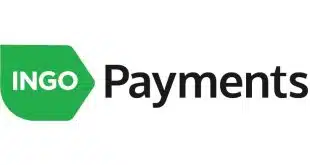Two research reports released on Wednesday point up emerging opportunities in mobile banking and same-day bill payments, particularly for financial institutions. Banks and billers alike will have to be careful how they price so-called expedited bill payments, or those electronic payments that post with billers on the same day. These 11th-hour payments, which consumers typically make to avoid stiff late fees, now carry an average fee to the consumer of $8.18, according to Pleasanton, Calif.-based Javelin Strategy & Research, which released its 2009 Expedite Payments Forecast report. While that's up 45% from 2007, banks and billers shouldn't count on continued fee increases. Javelin projects fees will dip to $7.96 next year and drift down to $7.13 by 2014. Annual fee revenue, meanwhile, will range between $1.1 billion and $1.2 billion for the next five years after peaking at $1.4 billion in 2008. The reason for the decline in fees and income is a strengthening economy, Javelin says. As economic conditions improve, last-minute payments become more a matter of convenience than of necessity. That puts downward pressure on pricing. Since the recession set in with a vengeance last year, usage of expedited bill-pay services has slackened as strapped consumers resort to the pricey service only when they have no alternative to avoid paying hefty late charges, which will total $4.5 billion this year. Some 8% of consumers had used last-minute bill pay in the last 30 days when surveyed this year, compared with 13% in 2008. Those performing such payments once a month dropped to 16% from 26%. As the economy improves and pricing comes down, consumers will again turn to the service as a convenience and usage will climb, Javelin predicts. The number of households taking advantage of expedited payments will rise to 36 million in five years. That number fell to 31 million this year after peaking at 34 million in 2007 and 2008. Besides pricing the service right, Javelin recommends banks and billers target younger users and tie the payments to the mobile channel. This advice could be particularly important for banks, which currently command only a 27% share of expedited payments, the research firm says. This low share relative to billers contrasts with the fact that many experts have identified last-minute payments as one of the few avenues by which banks can earn revenue from electronic bill payment. Meanwhile, banks can drive down transaction costs by concentrating on converting to mobile banking customers who don't regularly use online banking, says a report from VeriSign Inc., Fiserv Inc., and M-Com, a provider of software for mobile banking. So far, banks have targeted mobile banking at users of online banking. But in doing so, they are ignoring a potential customer base of 55 million who are using far more expensive channels to interact with financial institutions, the report says. In a survey of 501 customers who don't regularly use online banking, 60% said they would use at least one mobile banking service if it were offered in a month. Yet currently they check balances and review transactions through such methods as paper statements, which carry a transaction cost of 75 cents each, bank tellers ($4), and interactive voice response systems ($1.25). One-third report using the online channel, at a cost to the bank of 17 cents per transaction. By contrast, a mobile-banking transaction costs 8 cents on average. By aiming mobile banking only at online-banking users, banks are “are simply migrating some transactions from one low-cost self-service platform to another,” the report says, and forfeiting the much larger savings to be had among non-users of online banking.
Check Also
QorPay Adds Services From Visa’s Cybersource to Its Payments Menu
QorPay Inc. reported Thursday that it has integrated its payment technology with Visa Inc.’s Cybersource …







